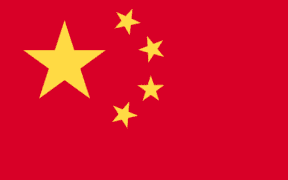5% WELCOME BONUS SITEWIDE
MY CART
Sword Types Index
Types of Japanese Swords
Discover our extensive index of Japanese swords, sortable by period, type, and use. Continuously updated with detailed information and new research, our collection includes entries on katana, wakizashi, tanto, and more, reflecting the rich history and craftsmanship of these iconic weapons.
UPDATED ON 08.08.2024
#
Name
Image
Region
Popularity
Tanto

Most Popular
Wakizashi

Most Popular
Katana

Most Popular
Ninjato

Most Popular
Chokuto

Very Popular
Tachi

Very Popular
Nodachi / Odachi

Very Popular
Gunto

Very Popular
Uchigatana

Commonly Recognized
Kodachi

Commonly Recognized
Nagamaki

Commonly Recognized
Naginata

Commonly Recognized
Daisho

Commonly Recognized
Iaito

Commonly Recognized
KoKatana

Commonly Recognized
OKatana

Commonly Recognized
Muramasa Cursed Sword

Commonly Recognized
Honjo Masamune Sword

Commonly Recognized
Sai Sword

 China
China
Commonly Recognized
Army Commissioned Officers Shin-Gunto Type 98

Commonly Recognized
Type 30 Bayonet

Commonly Recognized
Tsurugi

Occasionally Mentioned
Kogarasu-Maru

Occasionally Mentioned
Shikomizue

Occasionally Mentioned
Shinai

Occasionally Mentioned
Bokken

Occasionally Mentioned
Shirasaya

Occasionally Mentioned
Kusanagi-No-Tsurugi

Occasionally Mentioned
Naval Officer’s Dirk Dagger Pattern 1883

Occasionally Mentioned
NCO Gunto 32 Type “Ko” 1889 Sword

Occasionally Mentioned
Naval Prison and Shore Patrol Model 1889 Sword

Occasionally Mentioned
World War II Kamikaze Dagger/Dirk

Occasionally Mentioned
World War II Officer’s Dirks/Daggers

Occasionally Mentioned
Gendaito Swords

Occasionally Mentioned
Koa-Issin-To / Mantetsu-To Swords

Occasionally Mentioned
Kyu-Gunto Swords

Occasionally Mentioned
Shin-Gunto Swords

Occasionally Mentioned
Kai-Gunto Type 97 Swords

Occasionally Mentioned
Army NCO Shin-Gunto Type 95

Occasionally Mentioned
Army Commissioned Officers Shin-Gunto Type 94

Occasionally Mentioned
Shin-Gunto Type 98 – Early Models

Occasionally Mentioned
Shin-Gunto Type 95 – NCO Swords First Model

Occasionally Mentioned
Shin-Gunto Type 98 – Later Models

Occasionally Mentioned
Shin-Gunto Type 98 – The Revived Gunto Type

Occasionally Mentioned
Shin-Gunto Type 98 – Middle Wood Scabbard Model

Occasionally Mentioned
Shin-Gunto Type 98 – Koaissinto (Manchuria) Model

Occasionally Mentioned
Shin-Gunto Type 95 – NCO Swords Late Model

Occasionally Mentioned
Army Commissioned Officers Shin-Gunto Type 3

Occasionally Mentioned
Kyu-Gunto Swords Type 19

Occasionally Mentioned
Shin-Gunto Type 3 – Standard Model

Occasionally Mentioned